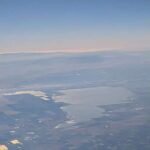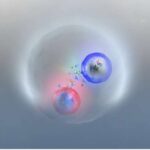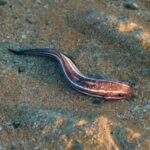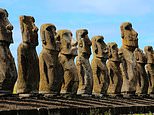Archaeologists have uncovered groundbreaking evidence on Easter Island, challenging the long-held belief that the island was entirely isolated after its initial settlement. This discovery, made by researchers from Uppsala University in Sweden, suggests that Easter Island was populated by multiple waves of seafarers over the past 800 years, rather than remaining cut off from the rest of the world.
Located over 2,000 miles off the coast of Chile, Easter Island, also known as Rapa Nui, is famous for its monumental Moai statues. Historically, it was believed that the island’s original inhabitants, the Rapa Nui, were completely isolated after settling around AD 1200. However, the new study indicates that the island’s history is far more complex.
Revisiting Easter Island’s History
The study, led by Professor Paul Wallin, analyzed archaeological data and radiocarbon dates from various sites across Polynesia. The findings reveal that similar ritual practices and monumental structures existed across the region, suggesting a network of interaction between islands.
According to Professor Wallin, “Easter Island was settled from central East Polynesia around AD 1200-1250. The Polynesians were skilled sailors, so double canoes were used.” This challenges the narrative of a single, isolated settlement and suggests multiple migrations to the island.
Monumental Structures and Cultural Links
The Moai statues, carved from volcanic rock and placed on stone platforms known as ‘ahu’, have long been a symbol of Easter Island’s unique culture. However, the study points out that similar ahu platforms were constructed on other Polynesian islands, indicating cultural exchanges.
‘The temple grounds ahu [also known as marae] exist on all East Polynesian islands,’ Professor Wallin added.
This evidence suggests that the cultural and social development on Easter Island was part of a broader Polynesian context, rather than an isolated phenomenon.
Implications of the New Findings
The study’s findings have significant implications for our understanding of Polynesian migration patterns. The researchers argue that the static west-to-east colonization model for East Polynesia is overly simplistic. Instead, they propose a dynamic process of migration and interaction between islands.
The research also suggests that the construction of monumental structures, such as the Moai, was part of a wider trend across Polynesia, reflecting hierarchical social structures that developed independently on islands like Easter Island, Tahiti, and Hawai’i.
Modern Challenges and Conservation
Today, Easter Island is a UNESCO World Heritage Site, attracting tourists from around the world. However, tourism has brought challenges, as noted by study co-author Professor Helene Martinsson-Wallin, who observed environmental changes over the years.
‘When I was there in the 1980s, the sandy beach was white and there were almost no people around. When I came back in the early 00s, I thought the sand looked blue, and when I looked closer I saw that it was due to tiny, tiny pieces of plastic washed up by the sea from every corner of the Earth.’
This highlights the ongoing need for sustainable tourism practices to preserve the island’s unique cultural and natural heritage.
Looking Ahead
The new findings on Easter Island open up exciting possibilities for further research into Polynesian history and migration. By challenging the isolation narrative, this study invites a reevaluation of the interconnectedness of ancient Pacific cultures.
As researchers continue to explore the island’s past, the story of Easter Island serves as a reminder of the resilience and ingenuity of its early inhabitants, who navigated vast ocean distances to settle one of the most remote places on Earth.
 Reviving Tulare Lake: A Historic Restoration Plan Gains Momentum in California’s San Joaquin Valley
Reviving Tulare Lake: A Historic Restoration Plan Gains Momentum in California’s San Joaquin Valley Breakthrough in Top-Quark Pair Observation at CERN’s LHC
Breakthrough in Top-Quark Pair Observation at CERN’s LHC Breakthrough in Quantum Battery Technology Extends Lifespan 1,000-Fold
Breakthrough in Quantum Battery Technology Extends Lifespan 1,000-Fold Yulia Putintseva Requests Spectator Removal at Wimbledon Over Safety Concerns
Yulia Putintseva Requests Spectator Removal at Wimbledon Over Safety Concerns Exploring Canadian Cuisine: A Culinary Journey Across a Diverse Nation
Exploring Canadian Cuisine: A Culinary Journey Across a Diverse Nation Sea Lamprey Migration Patterns Could Revolutionize Great Lakes Management
Sea Lamprey Migration Patterns Could Revolutionize Great Lakes Management